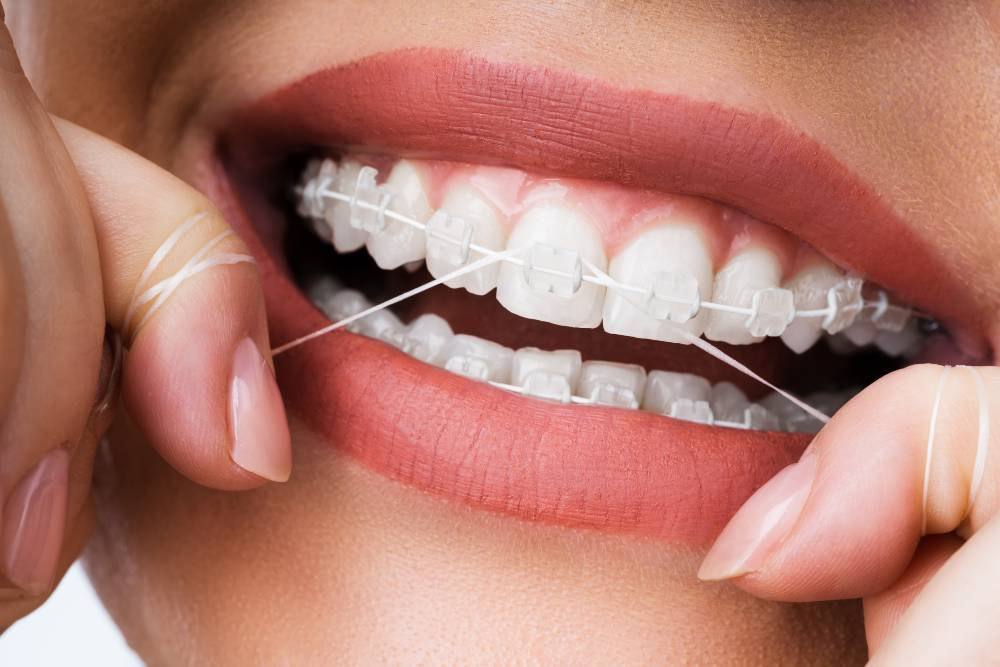The 10-Minute Rule for Legacy Orthodontics
The 10-Minute Rule for Legacy Orthodontics
Blog Article
Legacy Orthodontics - Questions
Table of ContentsRumored Buzz on Legacy OrthodonticsLegacy Orthodontics Fundamentals Explained8 Easy Facts About Legacy Orthodontics ExplainedThe Ultimate Guide To Legacy OrthodonticsThe Legacy Orthodontics Ideas
At Advanced Orthodontics, we supply individuals with a holistic therapy experience. Furthermore, we supply flexible therapy routines, versatile payment alternatives and an enjoyable, satisfying experience. braces. Telephone call ( 480) 357-4900 today for more details and timetable a visit.An orthodontist is a dental professional trained to identify, avoid, and treat teeth and jaw irregularities. Orthodontists work with people of all ages, from youngsters to grownups.
Malocclusion, or misaligned teeth, can result in dental problems, consisting of dental cavity, periodontal disease, and hard or painful chewing. But not everybody is born with straight teeth. If you have a negative bite or huge areas in between your teeth, you may desire to speak with a dental professional focusing on orthodontic treatment.
The 8-Minute Rule for Legacy Orthodontics
( Photo Credit Score: DigitalVision/Getty Images) Orthodontists utilize repaired and detachable oral gadgets, like dental braces, retainers, and bands, to alter the setting of teeth in your mouth. Orthodontic treatment is for dental abnormalities, including: Uneven teethBite issues, like an overbite or an underbiteCrowded teeth or teeth that are as well much apartJaw misalignmentThe goal of orthodontic treatment is to boost your bite.
While you may assume of orthodontists as mostly for kids or young adults that need dental braces, they can fix oral problems at any age. Orthodontists participate in college, oral college, and orthodontic institution.
, yet not all dental practitioners are orthodontists. They concentrate on 2 locations: How to effectively and securely move teeth How to effectively lead advancement in the teeth, jaw, and faceOnce an orthodontist has finished training, they have the option to come to be board accredited.
5 Easy Facts About Legacy Orthodontics Described
Malocclusion leads to tooth overcrowding, an askew jaw, or uneven bite patterns. Malocclusion is typically treated with: Your orthodontist connects steel, ceramic, or plastic square bonds to your teeth.
If you have only minor malocclusion, you may have the ability to make use of clear dental braces, called aligners, instead of standard dental braces (https://www.tripadvisor.in/Profile/legacyortho). Some individuals need a headgear to assist move teeth into line with stress from outside the mouth. After braces or aligners, you'll need to use a retainer. A retainer is a custom-made tool that keeps your teeth in position.
They're most typically made use of on children. They can produce additional area in the mouth without having to draw teeth. If you have a significant underbite or overbite, you might need orthognathic surgical procedure (additionally called orthodontic surgery) to lengthen or shorten your jaw. Orthodontists use cables, surgical screws, or plates to support your jaw bone.
You may require to see an orthodontist if you have: Crowding or otherwise adequate room for all of your teethOverbite, when your top teeth come over your base teethUnderbite, when your bottom teeth are as well far forwardSpacing or issues with gapsCrossbite, which is when your top teeth fit behind your base teeth when your mouth is closedOpen bite or a vertical void between your front base and upper teethMisplaced midline, when the center of your base and top teeth don't line up Remedying an oral malocclusion can: Make attacking, chewing, and speaking easierImprove the symmetry of our face and your total appearanceEase pain from temporomandibular joint disordersSeparate your teeth and make them simpler to clean, aiding prevent dental cavity or tooth cavities It's often a dentist who initially notices misaligned teeth during a regular test.
Indicators on Legacy Orthodontics You Need To Know

Throughout your initial orthodontic consultation, you'll likely have: A dental examPhotos taken of your face and smileDental X-raysPanoramic (360 level) X-rays of your face and headImpressions to produce molds of your teethThese tests will certainly aid your orthodontist understand exactly how to continue with your treatment. leesburg orthodontics. An orthodontist is a dental professional who's had training to treat your teeth and jaw
Orthodontists might execute surgery, exams,X-rays,and more to help you acquire an extra comfortable, much healthier smile. An orthodontist is concentrated on your bite, so something like a broken tooth would be handled by a dentist. Orthodontists are dental practitioners however not all dental professionals are orthodontists. Orthodontists are concentrated on your bite, or the method your teeth meshed, and the straightness of your teeth.
Ever wondered exactly how celebrities always seem to have completely straightened teeth? The response typically exists in the knowledgeable hands of an orthodontist. However what exactly does an orthodontist do? Orthodontists are dental professionals who focus on correcting abnormalities in the teeth and jaws. Their know-how goes past just developing a lovely smile; it encompasses boosting your total dental wellness and function.
3 Easy Facts About Legacy Orthodontics Shown

While braces are one of the most commonly recognized orthodontic therapy, orthodontists have a diverse toolkit at their disposal. The particular method selected depends on the seriousness of the situation, the client's age, and private choices. These reliable braces use a system of braces bonded to the teeth and connected by wires.
Clear aligners, like Invisalign, are a preferred alternative for patients looking for a much more discreet therapy alternative. These detachable trays are personalized to progressively shift the teeth's position. Headgear might be utilized combined with braces or aligners to use extra targeted forces, particularly for correcting you could try these out jaw discrepancies. In cases of narrow jaws, palatal expanders can be utilized to create area for proper tooth positioning.
Report this page